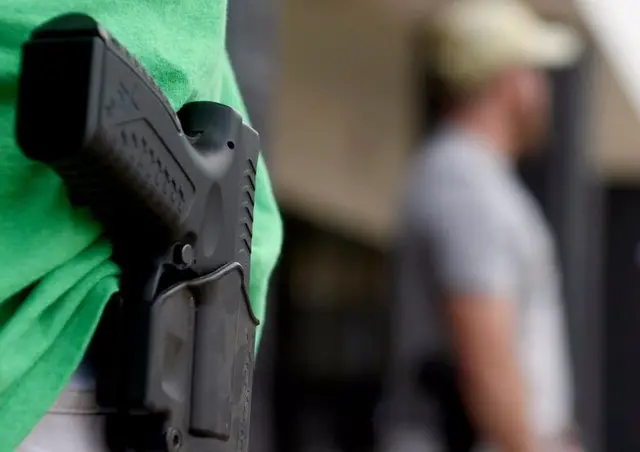Armed with an AK-47 assault rifle while attending a memorial service in the Kilagai area of the northern Baghlan province, Ziahul Haq, 21, said the deteriorating security situation in the country has forced many villagers to buy weapons for their own defense.
As with Haq, a number of both youngsters and adults were seen clutching their AK-47 guns at the ceremony.
"Who can guarantee that the Taliban or other irresponsible armed people are not hidden here at the memorial service to cause mayhem," Haq told Xinhua.
The relatively peaceful Baghlan province has been gradually sliding into chaos as Taliban militants have been fighting government forces in the Dand-e-Ghori, Dand-e-Shahabudin and Baghlan-e-Markazi districts, on the outskirts of the provincial capital of Pul-e-Khurmi city, 160 km north of Kabul, over the past month.
To mount pressure on the government, Taliban militants have also destroyed several power pylons in the Dand-e-Shahabudin area, plunging the capital city Kabul into darkness for past three weeks.
In addition to the armed opposition outfits such as the Taliban and the so-called Islamic State, a number of other armed militant groups also pose a threat to the peace and security of Afghanistan and its people.
In almost every village in the countryside, people are seen freely carrying weapons without any licenses to do so.
Even in the fortified city of Kabul, many people keep guns in their homes, saying that they are for security measures and for self-defense.
The gun holders in the capital fire irresponsible multiple rounds of bullets whenever Afghan athletes bring home medals from regional competitions, causing a great deal of concern among residents.
In a bid to counter the problem, the post-Taliban Afghan government initiated the process called the Disarmament, Demobilization and Reintegration (DDR) of armed groups in October 2003 through the so-called Afghanistan's New Beginnings Program (ANBP).
Under the UN-backed program, which ended in June 2005, more than 61,000 former combatants and armed militants had been disarmed as part of efforts to put the conflict-wracked Afghanistan on the road to lasting peace and stability.
Increasing security incidents and a mounting sense of insecurity, however, has promoted the culture of carrying arms among regular people in the militancy-plagued Afghanistan.
"I have no choice but to carry arms, otherwise armed robbers, enemies or thieves will harm me and my family," a former militia commander, Mahmoud, told Xinhua.
Accompanied by four armed bodyguards, Mahmoud said that, former hostilities claimed the lives of his son eight months ago and the possibility of more fatalities existed if he were to ignore the security threats.
"Basically, we hate weapons and armed groups, but armed people roaming around recklessly shows that the government has failed to disarm such irresponsible groups and because we feel insecure myself and many others have been forced to carry arms," Mohammad Sadeq of the northern Kunduz province told Xinhua.
The government has time and again warned such groups and people to lay down their arm and join the security mechanisms but the warnings and encouragement has yet to translate into concrete action.
Just a few days ago, governor of the northern Takhar province Yasin Zia blamed the armed groups for involvement in drug trafficking, murders and armed robberies, and warned them to lay down their arms, or face serious action.
Like Sadeq, countless people can be seen roaming other parts of Afghanistan carrying weapons, claiming self-defense, but in fact, contributing to the security crisis in Afghanistan. Enditem
 简体中文
简体中文




